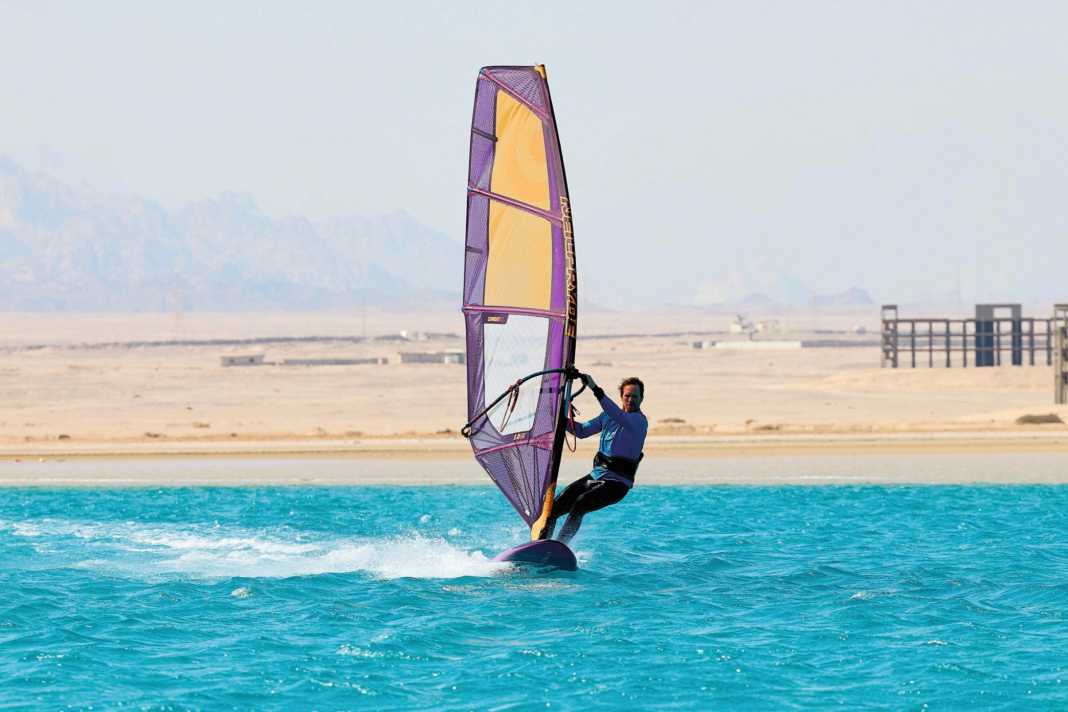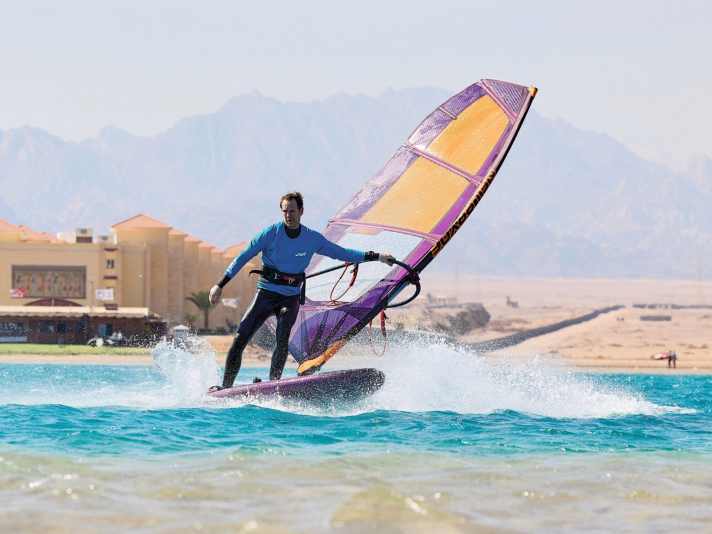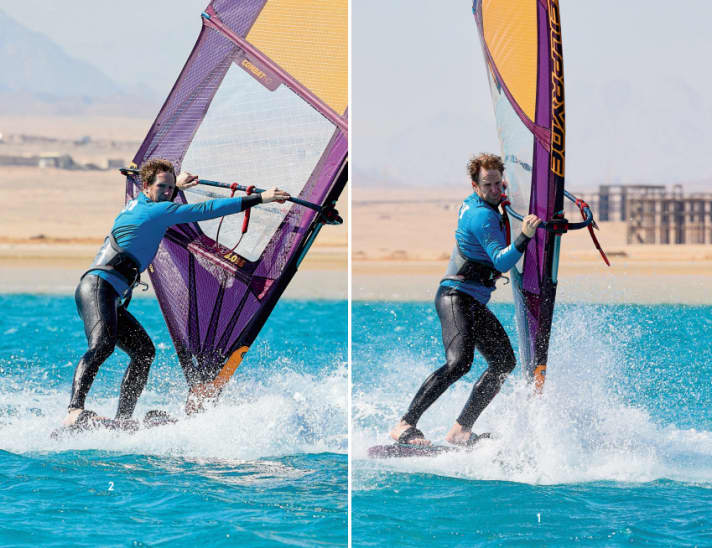





The transition from Vulcan to Spock is fluid - in fact, the first Spock happened by accident when Josh Stone was tweaking the Vulcan in 1997 and unintentionally kept turning. As soon as you approach the Spock in a planned manner, it is important to look for the smoothest possible water surface, as the board can then slide more freely. This is because the Spock consists of a Vulcan which, after turning 180 degrees in the air, completes its full rotation on the water - flipping like a stone, sometimes with the (lifted) fin in front.
Keyword "sliding": Freestyle boards are ideal for practising the spock. Wave or freestyle wave boards can also be spocked, but if your board has a long centre fin (> 23 centimetres), you should swap this for a shorter one.
More Freestyle Basic Tutorials:
The three phases of Spock
The jump
In contrast to the Vulcan, you need a little more basic speed for the Spock. The aim is also to achieve a flat take-off, ideally on a half-wind or light space wind course. The same applies here: push your front hand all the way forwards before the jump, this makes it easier to quickly cross-grip the boom!
Shifting like the Vulcan
The change of grip on the boom also takes place close to the mast. Therefore, try to pull the mast towards your body with your front arm and get to the other side of the boom quickly. The bent back leg pulls the tail slightly under the body so that the bow touches the water first. After the initial vulcan, the tail should slide further to leeward. This is easier if you jump further round than you would with a volcano. This means that if you rotate the tail only 120 to 130 degrees in the air, this is ideal for a Vulcan. If you jump a little further round, this favours a further turn into the spock.
Sliding in back position
To continue sliding on the bow, the template is absolutely crucial. You will get this if you push the mast far away from your body towards the tip of the board after the initial volcano. During this phase, your gaze goes over your front shoulder, which helps you to continue turning.
surf tip: If your bow does not turn any further to leeward during this phase, you can also sheet in the sail and save the move as a Vulcan. However, once the fin is in the air and grabs hold, the board will usually automatically rotate further into the spock.
The fin catches, the board rotates and the bow slides into the original direction of travel due to the wind. Important: Don't push too hard with your back hand, otherwise the sail will load up too much and the back pressure will sweep you backwards off the board. Instead, keep the mast arm extended and the back hand more passive. The final shift is then the easiest part of the spock. As with all shifts, you should pull the mast towards your body so that it rotates as vertically as possible.
You can see the individual steps in the gallery above!
The Spock as the basis for countless sliding moves
The Spock is your ticket to the world of sliding moves. Over the years, countless variations have been created - Spock 540, Spock Diablo, Double Spock and Spock Culo, to name but a few. So you're guaranteed not to get bored afterwards!
Variant: One handed Spock

The one-handed version of the Spock not only looks casual, but also has another technical advantage: the upper body can be rotated much more freely with one hand than in the two-handed version (compare image 8 of the sequence), which supports the rotation. The only difference: After the cross grip (2-4), the back hand is placed further forwards on the boom.
Mistake with the Spock: Don't push!

The classic mistake with the Spock! If you push into the sail with your back hand - driven by the desire to induce rotation - the sail becomes extremely loaded (1). The counter-pressure is then immediately so great that you can no longer maintain the necessary planing and it pushes you backwards off the board - a principle that applies to all manoeuvres in the back, whether helicopter turn or carving 360. You can see the difference in picture 2: the back hand is not pushing into the sail here, but is passive, allowing the sail to open up and let off steam. As a result, it is easier to keep the mast at a distance with the front arm. It is important to realise that the rotation of the Spock is not triggered by the rotation of the sail. In fact, the board rotates first and the sail follows automatically.

